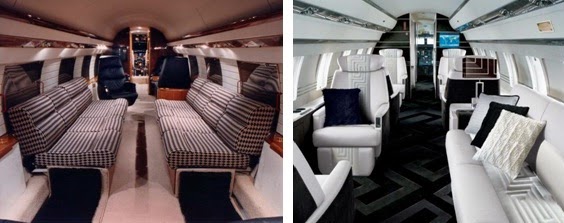The aircraft cabin interiors market is expected to see huge growth in the next few years.
According to Yahoo!Finance:
“The global market for Aircraft Cabin Interiors is projected to reach US$36.6 billion by 2025, driven by shifting interior design perspectives which are changing from the traditional focus on functional optimization towards quality of passenger experience. The quality of the travelling environment is today of significant importance for airline companies against a backdrop of growing competition and increased commoditization of air travel services. One of the ways to de-commoditize air travel is to create new value. With people around the globe today increasingly investing in memories that come with vacations and family travels rather than spending on material things, the flying experience, especially in-flight experience is gathering importance. Comfortable interiors are therefore emerging into a powerful service differentiator. The psychological impact of comfort is helping bring aircraft interiors into focus on par with mechanical engineering designs. Few of the ways in which cabin interiors influence passenger comfort and flying experience include cabins adorned and decorated with rich tapestry, upholstery and furnishings help impart of sense of luxurious comfort; bright and stylish cabins create a feeling of well-being and satisfaction with the services offered; cabins with more space and legroom create an Illusion of more value for money; cabin lighting schemes influence passenger moods and perception of quality of the airline service. Similar to lighting, the color of cabin interiors also influence passenger mood and this explains why a large majority of aircraft have blue colored seats. Blue as a color is known for its calming effect and is therefore valued for its touted ability to make travel less stressful by invoking feelings of trust, efficiency, serenity, coolness. Other popular colors for cabin interiors include yellow which boosts self-esteem, optimism and confidence; green which encourages feelings of harmony, equilibrium and peace; and orange which brings sensuality, passion and fun into the flying experience.
“The retrofit segment is estimated to witness strong growth rate in the coming years as a result of upgrades of aircraft seating systems in aging commercial fleets to improve passenger safety. The business class segment of the aircraft seating market is also expected to account for a sizable share of revenues supported by demand for luxurious seating solutions against the backdrop of rising incomes, and greater spending by companies on corporate travel. A key trend in the seating market is the growing investments in raw fabrics and technical textiles for producing quality seats and increasing use of advanced hybrid composite materials for manufacturing aircraft seats. Smart and sophisticated windows and windshields are gaining in prominence for their advanced features such as trajectory predictions, performance computation and navigation. Like aircraft seats, composite windows and windshields will score the highest market gains given the focus shed on lightweight interior components to improve fuel economy and lower fuel costs. Few of the advancements in aircraft windows and windshields include smart dimmable windows that allow adjustment of light quantity. Smart windows are gradually replacing traditional standard plastic shade pull-down windows. A key trend in the market is the growing demand for carbon fiber composites as it allows deployment of IFE (in-flight entertainment) systems, such as passenger interfaces for games, telephone services, music and movies as well as touch screens within airplanes. The United States and Europe represent large markets worldwide with a combined share of 67.6% of the market. China ranks as the fastest growing market with a CAGR of 9.8% over the analysis period supported by blossoming domestic aviation market under the aegis of economic modernization which has resulted in over 600 million passengers travelling annually through China’s expanding network of airports…”










